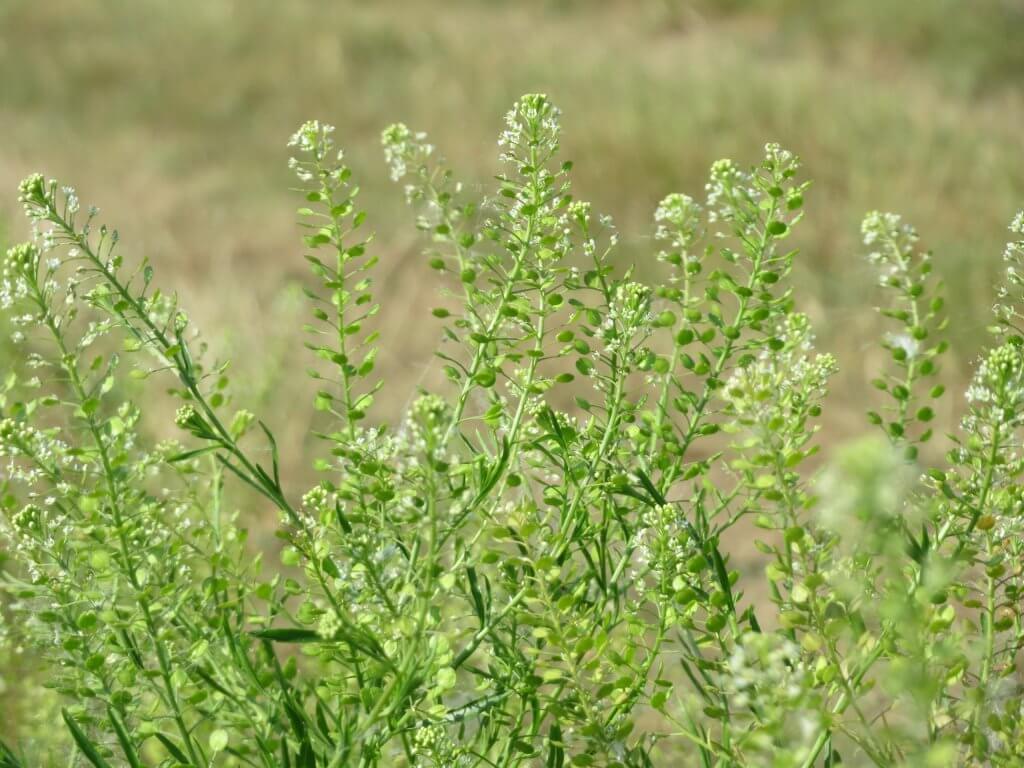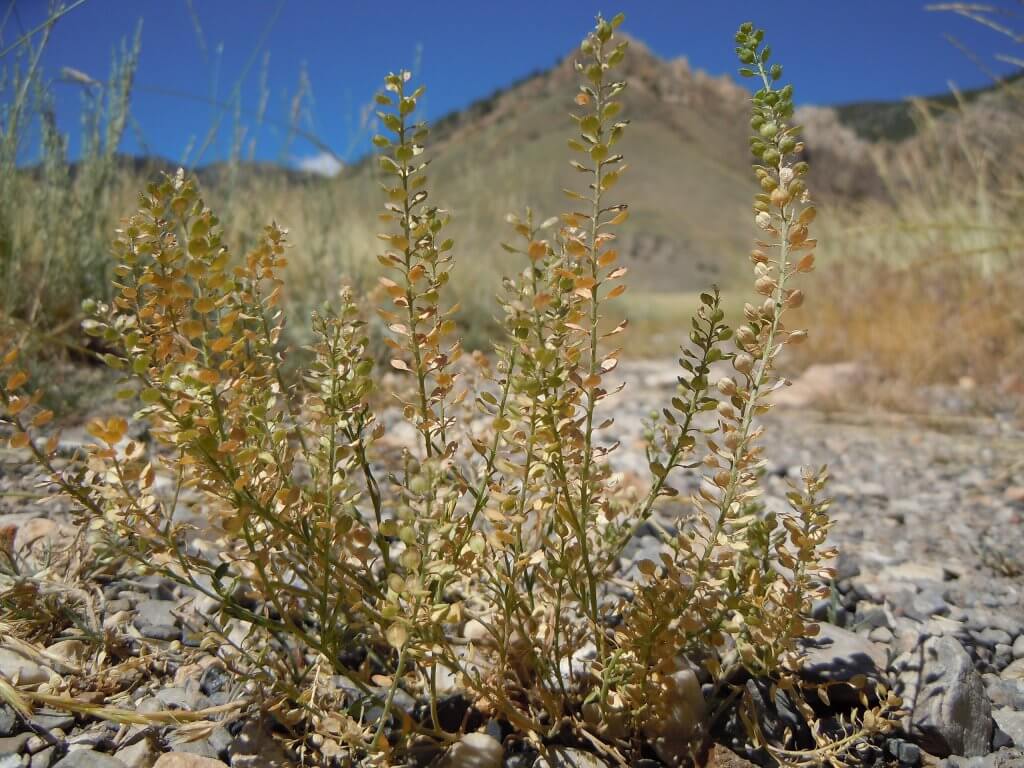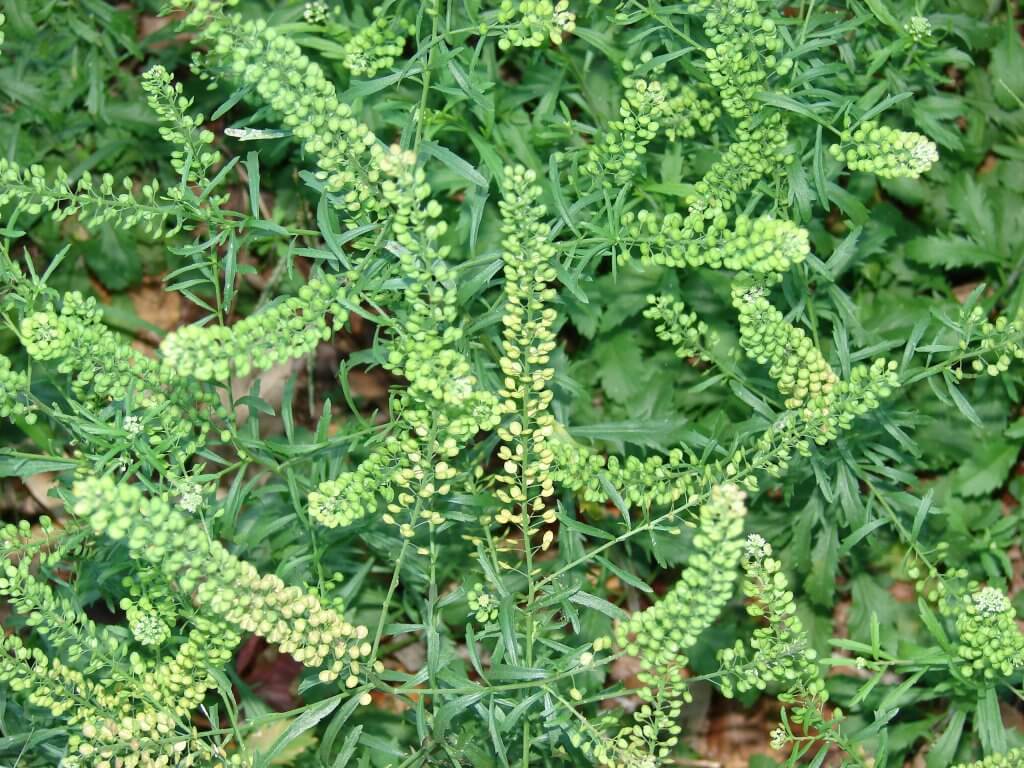Peppergrass (Lepidium spp.), is the common name given to a collection of plants belonging to the Brassica family. The genus contains well over 200 species, native to all corners of the world. From remote Lord Howe island in Australia, to Hawaii. Overtime they have adapted and evolved into different species that suit their habitat. One member of the Lepidium genus that we may be familiar with is garden cress (Lepidium sativum), a species widely cultivated in Europe.
Two wild species in particular are common in the United States. Virginia pepperweed (Lepidium virginicum) and prairie peppergrass (Lepidium densiflorum), are both native species, and can be found across most states. Field pepperwort (Lepidium campestre) is another commonly found plant, however this was likely introduced via trade and colonisation as it is endemic to Europe.

Found in areas of disturbed soils, disused fields, and woodland edges, peppergrass is usually identified as a weed. However many wild foragers greatly appreciate them for their peppered taste.
A small to medium sized plant, you can usually distinguish peppergrass by its rosette of toothed leaves with a central stalk bearing a raceme of subtle flowers. This cluster of flowers will develop into flat, oval shaped seed pods. The pods are much like those of shepherd’s purse, another edible plant that it can often be confused with.
Edible parts and other uses
The young leaves and also the seed pods are perfectly edible, delicious and spiced. They emit a sweetly peppered and mustard like flavoring that can add a wonderful kick to a salad or garnish.
Peppergrass seeds can also be dried and stored for use throughout the winter if you have any extras left over from a foraging expedition. Leave the stalks to dry in a cool dark place for about a week, then remove the seedpods and store in an airtight container. These can then be added straight into recipes, or ground and used as a peppery seasoning.
Peppergrass plants also have a substantial medicinal history. Used to treat vitamin deficiencies, intestinal worms and general inflammations, peppergrass was valued as a soothing herb. Native Americans also used peppergrass leaves and seeds in the treatment of respiratory illnesses, especially in helping to clear congestion.

Cautions
A small number of individuals have experienced allergic reactions when eating peppergrass. If you have a mustard allergy, whether small or suspected, you should avoid eating peppergrass.
Another caution to be mindful of is a unique characteristic of the plants root system. Peppergrass is known as a ‘hyperaccumulator’, meaning that it can absorb a high number of metals. This means that plants within soil contaminated with toxic metals will absorb these metals and store them.
Foraging
From when the first young shoots appear in early spring, to mid winter, peppergrass is ripe for the picking. Younger leaves will have a better flavoring, particularly before the plant flowers. However older leaves can still be harvested and cooked into soups and hot dishes.
Look for them along sunny field edges, your own yard, and along forest and woodland pathways. Make sure to avoid harvesting plants along busy roads or fields in use, as pollution or herbicides could be present on the plants. As with all wild foraged foods, make sure to wash the leaves and seed pods thoroughly.
The seedpods can usually be removed in one clean sweep if you run your cupped hand from the end of the stem towards the base.

Did you know…
Peppergrass was actually historically called poor man’s pepper. This is because it was used as a substitute to season meals by those who could not afford imported black pepper.
Conclusion
High in vitamin C, peppergrass is a nutritious potherb that you can forage and collect well into winter when other leafy plants have died back. Native varieties would be a perfect plant to grow within your own yard. Even a small plant could supply you with a tasty peppered herb to use throughout the whole year, especially if you choose to dry the seed pods.
—————Written by Hannah Sweet
Hannah is a freelance writer and graphic designer from the UK. With a penchant for travelling, photography and all things botanical, she enjoys writing about a wealth of topics and issues, from conservation and slow living, to design and travel. Learn more about her writing and design services at www.sweetmeanders.co
Many of our readers find that subscribing to Eat The Planet is the best way to make sure they don't miss any of our valuable information about wild edibles.
See our privacy policy for more information about ads on this site







One Response
The information is very helpful. Our gunny pigs enjoy pepper grass as well. My daughter enjoys picking plants and making salads.